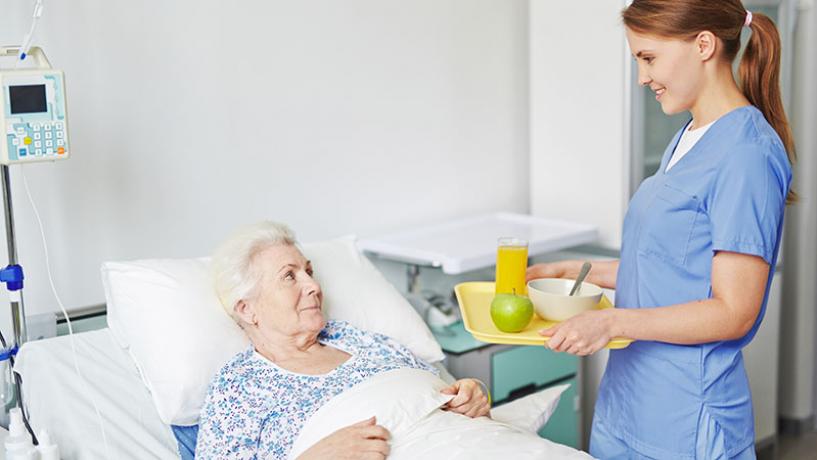
As Australia continues to work towards stopping the spread of the novel coronavirus, organisations in the health and community sector need to be particularly diligent. Long-term care facilities care for the elderly or adults who need full-time assistance and have underlying health conditions; these groups of people are vulnerable to the effects of the coronavirus and are more likely to get a severe case of COVID-19. Preventative measures should be put in place and upheld within health and community organisations to prevent the spread of COVID-19. The following are recommendations for how to ensure the safety of your residents, staff and the community at large.
Ensure that safety protocols are being maintained
Hygiene, cleaning and sanitising
Businesses and organisations within the health and community sector need to maintain their hygiene and cleaning and sanitising measures. In light of the COVID-19 pandemic, the cleaning and sanitising standards have been updated to include a higher frequency of cleaning and sanitising — including sanitising items and areas that are often cleaned but not always sanitised. This is essential to prevent the spread of the coronavirus and keep residents and staff safe and healthy. All staff, especially those that are preparing food for residents of long-term care facilities, should be re-trained on hygiene standards such as proper hand washing and the etiquette for coughing and sneezing. Staff should also be reminded to not touch their face at all while working, especially with food.
Personal protective equipment
All staff should be provided with personal protective equipment (PPE) — such as gloves and masks — as much as possible. This can include your kitchen staff and Food Handlers, however it is important to remember that disposable gloves are not recommended for use during food preparation. Disposable gloves should only be used when your food handling staff are touching ready-to-eat foods. Ensure that staff are trained on how to properly use PPE and how and when to change them.
Physical distancing
Ensure that all staff are following physical distancing measures as much as possible. This may not be easy for some staff who work in close proximity with residents, however staff should be encouraged to maintain distance whenever possible. Management can also ensure that physical distancing is being achieved with kitchen staff by re-arranging the kitchen layout, or only allowing a few food handlers in the kitchen at one time.
Reporting COVID-19 symptoms
It is vital that the protocols for reporting illnesses is maintained and enforced. All staff in long-term care facilities need to be trained on the signs and symptoms of COVID-19 and what to do if they suspect they may have been exposed to the virus. While having sick employees is challenging for health and community organisations that need all hands on deck, it is absolutely essential that workers do not come to work while sick. If they fall ill while on the premises, ensure that the proper protocols for dealing with sick employees are followed.
Apply new methods of protection
Implement screening and limits on visitors
Organisations in the health and community sector often have many people come in and out of their premises. This means that it can be quite easy for the contagious coronavirus to be brought into the establishment and spread among staff and residents. Organisations should consider restricting the number of residents that are allowed within the premises at one time. Also, testing and screening of everyone who enters the premises is an effective way to prevent the spread of COVID-19. Testing can involve taking temperatures, and screening can involve assessing for symptoms and asking questions about potential COVID-19 exposure prior to entering the establishment.
Put restrictions in place
Restrictions can involve reducing access points to the establishment so that all staff and visitors enter through one area. This helps to make testing and screening easier, and allows for management to keep a tally of how many people are within the establishment at one time. It is also important to acknowledge that many workers in the health & community sector, including Food Handlers, work within multiple establishments. Organisations need to assess their individual situations and whether restrictions should be placed on this. If staff are required to only work at one location, you may lose some staff, however the benefits of this is that the vulnerable residents are more protected. You reduce the chance of staff contracting COVID-19 at another facility and bringing it into yours.
Install protective barriers
Some establishments are choosing to install plexiglass barriers at check-in counters in order to protect staff. This helps prevent staff from contracting COVID-19 from visitors who are coming to see residents and staff who are entering to work for the day. Any amount of additional protection that can be offered to your staff should be considered and implemented if possible.
Stay up-to-date on the latest recommendations and information
New information about SARS-CoV-2 and the disease it causes, COVID-19, is coming out on a daily basis. As such, it is important to remember that the above list is not exhaustive and these recommendations are subject to change. The Australian Institute of Food Safety strives to provide updated information about the nature of the coronavirus and the protocols that organisations in the health & community sector must follow. The AIFS COVID-19 Information page provides informative resources to help businesses and organisations maintain safe operations.




